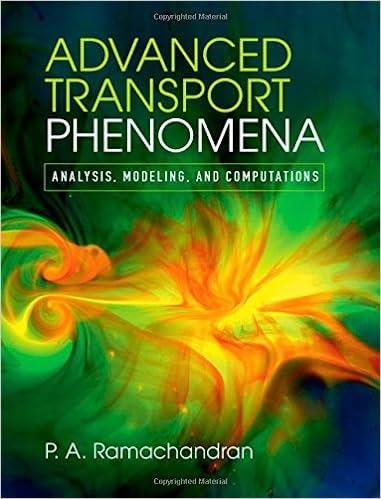Consider a boundary layer with no external pressure gradient (a flat plate). Then, from the Prandtl boundary-layer
Question:
Consider a boundary layer with no external pressure gradient (a flat plate). Then, from the Prandtl boundary-layer equation, deduce that
\[\mu \frac{d^{2} v_{x}}{d y^{2}}=0 \text { at } y=0\]
Now derive an expression for the second derivative of velocity at the surface for the case where there is a finite pressure gradient. In particular, show that
\[\mu\left(\frac{d^{2} v_{x}}{d y^{2}}\right)_{y=0}=-ho v_{\mathrm{e}} \frac{d v_{\mathrm{e}}}{d x}\]
where \(v_{\mathrm{e}}\) is the \(x\)-component of the velocity at the edge of the boundary layer.
Using the above result, show that the following velocity profile can be used in the presence of a finite pressure gradient:
\[\frac{v_{x}}{v_{\mathrm{e}}}=\frac{3}{2} \eta-\frac{\eta^{3}}{2}+\frac{\delta^{2}}{4 v} \frac{d v_{\mathrm{e}}}{d x}\left[\eta-2 \eta^{2}+\eta^{3}\right]\]
where \(\eta\) is defined as \(y / \delta\). Also \(v=\mu / ho\) as usual. This can then be used in conjunction with the von Kármán integral momentum balance to find the boundary-layer thickness and the velocity profiles for non-flat surfaces.
Step by Step Answer:

Advanced Transport Phenomena Analysis Modeling And Computations
ISBN: 9780521762618
1st Edition
Authors: P. A. Ramachandran





